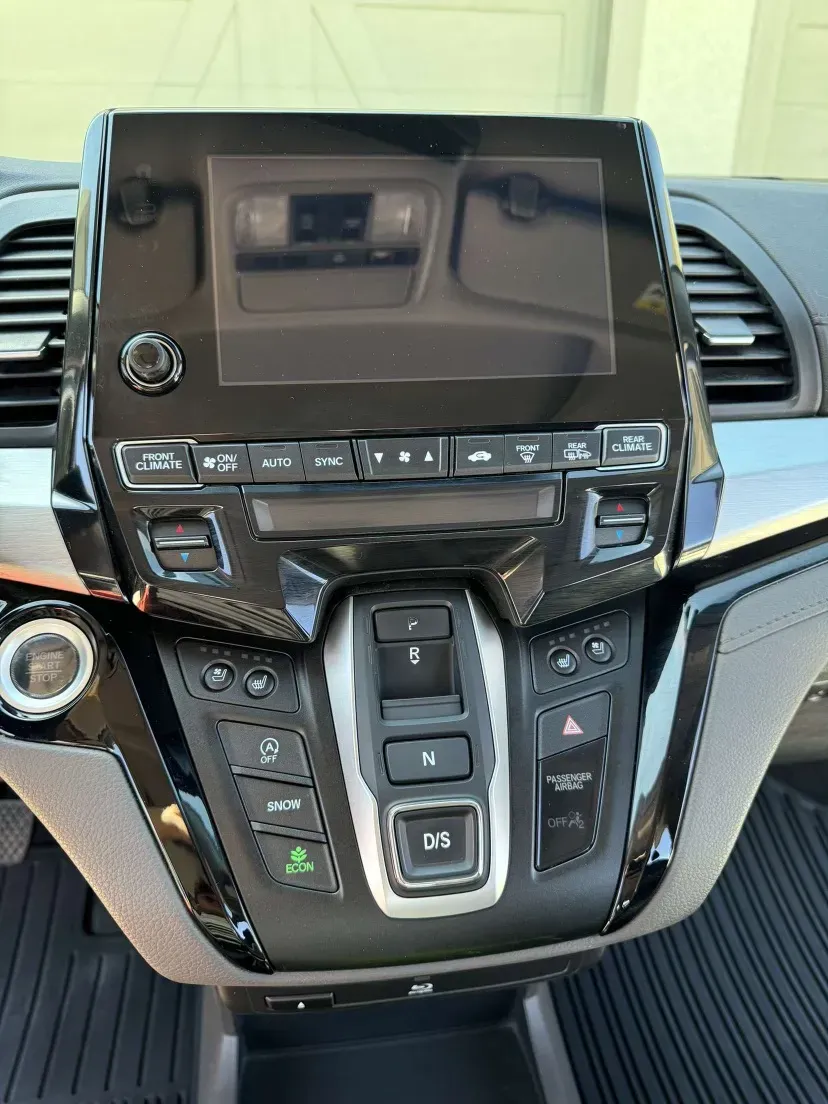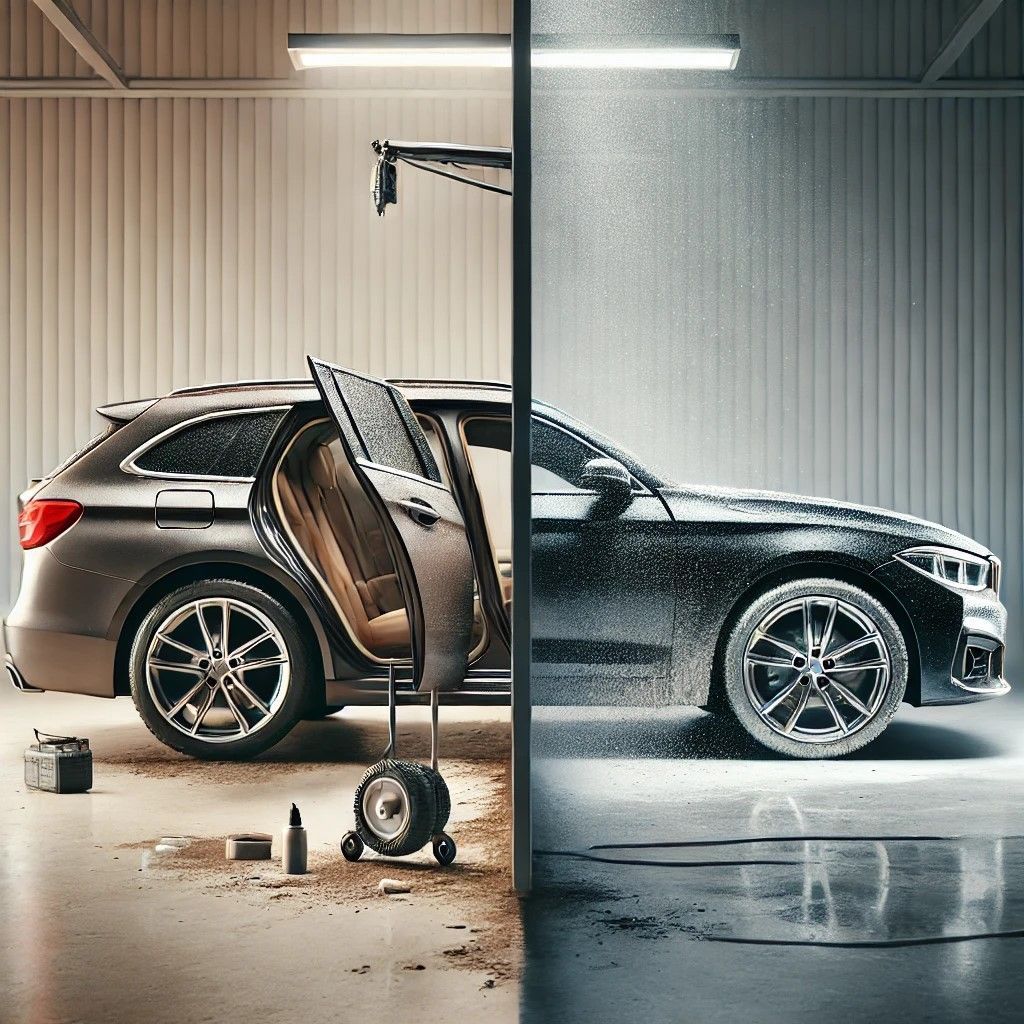How Frequently Should Clay Bar Service be Performed
Optimizing Your Vehicle's Shine: The Ideal Clay Bar Schedule for Car
The Art of Clay Barring for Pristine Vehicle Exteriors
Maintaining the exterior of your car is crucial not only for its aesthetic appeal but also for its longevity and overall value. One of the key processes in car care is the use of a clay bar treatment. This method helps remove contaminants that regular washing cannot, ensuring a smooth and clean finish for your vehicle.
Olathe, KS, experiences a range of weather conditions throughout the year, from hot and humid summers to cold and snowy winters. These varying conditions can introduce different types of contaminants to your car’s paint, such as road salt, grime, pollen, and industrial fallout. Given these factors, it’s important to understand how often a clay bar treatment should be applied to maintain your car’s exterior in this region.
Clay bar treatments have become increasingly popular among car enthusiasts and detailers, but a common question arises: how often should you use a clay bar on your car? Understanding the ideal frequency for this treatment can help you maintain your car’s paint in pristine condition without overdoing it. In this article, we will explore the factors that influence the need for clay bar treatments, provide recommendations based on various conditions specific to Olathe, and offer tips for how to use a clay bar on your car to keep it's exterior in top shape.
What is a Clay Bar Treatment?
A clay bar treatment is a detailing process that removes embedded contaminants from a car’s paint surface, leaving it smooth and clean. Over time, your car’s paint can accumulate various pollutants such as brake dust, industrial fallout, tar, tree sap, and other environmental debris. These contaminants can adhere tightly to the paint, making them difficult to remove with regular washing alone.
The Clay Bar Treatment Process
The clay bar itself is a flexible, sticky, resin-based product that, when used correctly, can lift and remove these contaminants without damaging the paint. Here’s a step-by-step overview of the process:
- Preparation: Before using a clay bar, thoroughly wash and dry your car to remove any loose dirt and grime. This ensures that the clay bar can focus on the embedded contaminants.
- Lubrication: To prevent the clay bar from sticking to and potentially scratching the paint, a lubricant is applied. This can be a detailing spray or a dedicated clay bar lubricant.
- Claying: Flatten a piece of the clay bar and gently glide it over the lubricated paint surface in a back-and-forth motion. As the clay bar picks up contaminants, it will become dirty. Fold and knead the clay to expose a clean surface before continuing.
- Inspection: Regularly check the paint surface by feeling it with your hand or a plastic sandwich bag. Once it feels smooth and free of contaminants, move on to the next section.
- Final Steps: After claying the entire car, wipe off any remaining lubricant with a microfiber towel. It’s recommended to follow up with a polish and a protective wax or sealant to enhance the paint’s shine and protection.
Benefits of Using a Clay Bar
Using a clay bar offers several benefits:
- Improved Paint Condition: By removing embedded contaminants, the paint surface becomes smoother, which can enhance the application and durability of waxes and sealants.
- Enhanced Appearance: A clean, contaminant-free surface reflects light better, giving your car a more vibrant and glossy appearance.
- Long-Term Protection: Regular use of a clay bar helps prevent contaminants from causing long-term damage, such as oxidation and clear coat degradation.
Specific Considerations for Olathe, KS
In Olathe, KS, the varying weather conditions can significantly impact your car’s paint. During winter, road salt and grime can accumulate on your car, necessitating a thorough clay bar treatment to prevent damage. In the spring and summer, pollen, tree sap, and bug residue become more prevalent, requiring regular maintenance to keep your car looking its best. Industrial fallout from nearby urban areas can also contribute to the buildup of contaminants on your car’s paint.
By understanding what a clay bar treatment is and how it works, as well as considering the specific environmental factors in Olathe, you can better appreciate its role in maintaining your car’s exterior and ensuring it looks its best.
Factors Influencing the Frequency of Clay Bar Treatments
The frequency with which you should apply a clay bar treatment to your car can vary based on several key factors. Understanding these factors will help you determine the best maintenance schedule for your vehicle, particularly in Olathe, KS.
Driving Habits and Environment
Your driving habits and the environment in which you drive play a significant role in how often you need to use a clay bar. In Olathe, if you frequently drive in areas with heavy traffic, construction zones, or near industrial sites, your car's paint is more likely to accumulate contaminants like brake dust, tar, and industrial fallout. These particles can adhere to the paint and become difficult to remove through regular washing.
Conversely, if your driving is mostly limited to suburban areas with less pollution and traffic, you might not need to clay bar your car as often. In general, cars driven in high-contaminant environments may benefit from clay bar treatments every 3-4 months, while those in cleaner areas may only need it every 6 months to a year.
Seasonal Considerations
The changing seasons in Olathe also impact how often you should use a clay bar. Winter driving conditions can expose your car to road salt, which can lead to rust and other damage if not properly removed. A clay bar treatment at the beginning and end of winter can help eliminate these harmful contaminants.
Spring and summer bring their own challenges, such as pollen, tree sap, and bug residue. These contaminants can stick to your car’s paint and cause damage over time. Performing a clay bar treatment every few months during these seasons can help keep your car’s exterior in top condition.
Existing Paint Protection
The level of protection on your car’s paint also influences the frequency of clay bar treatments. If you regularly apply high-quality wax or paint sealant, these protective layers can help repel contaminants, reducing the need for frequent clay bar treatments. However, if your car’s paint protection is minimal or has worn off, contaminants can more easily bond to the paint, necessitating more frequent claying.
Visual and Tactile Inspection
One practical method to determine if your car needs a clay bar treatment is by performing regular visual and tactile inspections. After washing your car, run your hand over the paint surface. If it feels rough or you notice visible contaminants that washing didn’t remove, it’s time for a clay bar treatment. Additionally, using a plastic sandwich bag can help you feel the surface more accurately; any roughness indicates the presence of bonded contaminants that need to be removed.
By considering your driving habits, seasonal factors, and the existing level of paint protection, you can develop a tailored clay bar treatment schedule that ensures your car’s paint remains in optimal condition throughout the year.
How to Determine If Your Car Needs a Clay Bar Treatment
Knowing when your car needs a clay bar treatment is crucial for maintaining its exterior in optimal condition. Here are some practical methods to help you determine if it’s time for this essential detailing step.
Visual Inspection
One of the simplest ways to assess whether your car needs a clay bar treatment is through a visual inspection. After washing your car, look closely at the paint surface. If you notice any visible contaminants such as tar spots, tree sap, bug residue, or industrial fallout that washing didn’t remove, it’s a clear sign that a clay bar treatment is needed. These contaminants can bond to the paint surface and become embedded, making them difficult to remove with just a wash.
Tactile Inspection
A tactile inspection is another effective method to determine the need for a clay bar treatment. After washing and drying your car, gently run your hand over the paint surface. If it feels rough or gritty, it indicates the presence of embedded contaminants. For a more precise assessment, you can use a plastic sandwich bag:
- Wash and Dry: Thoroughly wash and dry your car to remove any loose dirt and debris.
- Bag Test: Put your hand inside a plastic sandwich bag and lightly glide it over the paint surface. The bag will amplify any roughness, making it easier to detect contaminants that need to be removed.
If the surface feels rough under the plastic bag, it’s a sign that your car could benefit from a clay bar treatment. This method helps identify contaminants that are not easily visible but can still impact the paint’s smoothness and appearance.
Seasonal and Environmental Considerations
In regions like Olathe, KS, where seasonal changes bring varying types of contaminants, it’s essential to consider the environment when determining the need for a clay bar treatment. For example:
- Winter: Road salt and grime can accumulate on your car’s paint, necessitating a clay bar treatment at the beginning and end of the season to prevent long-term damage.
- Spring and Summer: Pollen, tree sap, and bug residue become more prevalent, requiring more frequent inspections and potential clay bar treatments.
Existing Paint Protection
The condition of your car’s paint protection also plays a role. If you regularly apply wax or a paint sealant, you might not need to use a clay bar as frequently. However, if the protective layer is minimal or worn off, contaminants can bond more easily to the paint, making regular clay bar treatments more necessary.
By combining visual and tactile inspections with an understanding of seasonal and environmental factors, you can accurately determine when your car needs a clay bar treatment. This proactive approach ensures that your car’s paint remains smooth, clean, and well-protected.
Recommended Frequency for Clay Bar Treatments
Determining the ideal frequency for clay bar treatments can help you maintain your car’s exterior in optimal condition without overdoing it. The frequency depends on several factors, including your driving habits, environmental conditions, and the level of paint protection. Here are some general recommendations tailored to different scenarios.
General Recommendations
- High-Contaminant Environments: If you frequently drive in areas with heavy traffic, near construction zones, or in industrial regions around Olathe, your car is exposed to more contaminants. In such cases, a clay bar treatment every 3-4 months is advisable. This helps remove pollutants like brake dust, tar, and industrial fallout, which can bond to the paint surface.
- Cleaner Environments: For cars primarily driven in suburban or rural areas with less pollution and traffic, the need for clay bar treatments is less frequent. In these cases, performing a clay bar treatment every 6 months to a year is usually sufficient to maintain a smooth, clean paint surface.
Seasonal Maintenance
- Winter: The harsh winter conditions in Olathe can lead to an accumulation of road salt and grime on your car’s paint. It’s recommended to perform a clay bar treatment at the beginning and end of the winter season. This helps to remove corrosive salt and prevent long-term damage.
- Spring and Summer: During the warmer months, your car is more likely to be exposed to pollen, tree sap, and bug residue. These contaminants can stick to the paint and become difficult to remove. A clay bar treatment every few months during spring and summer can help keep your car’s exterior in top condition.
Existing Paint Protection
The frequency of clay bar treatments can also be influenced by the level of protection on your car’s paint:
- High-Quality Wax or Sealant: If you regularly apply a high-quality wax or paint sealant, the protective layer can help repel contaminants. This can reduce the need for frequent clay bar treatments. In such cases, treating your car with a clay bar every 6 months may be sufficient.
- Minimal or Worn Protection: If your car’s paint protection is minimal or has worn off, contaminants can more easily bond to the paint surface. In this scenario, more frequent clay bar treatments, every 3-4 months, are recommended to maintain a clean and smooth finish.
Tailored Maintenance Schedule
To ensure your car’s paint remains in optimal condition, it’s important to tailor your maintenance schedule based on your specific driving conditions and environment. Regular visual and tactile inspections can help you determine when a clay bar treatment is necessary, allowing you to address contaminants before they cause significant damage.
By following these general recommendations and adjusting based on your individual circumstances, you can keep your car’s exterior looking its best throughout the year.
Benefits of Regular Clay Bar Treatments
Regular clay bar treatments offer numerous benefits for your car's exterior, ensuring that it remains in excellent condition and looks its best. Here are some of the key advantages:
Improved Paint Condition and Appearance
One of the most noticeable benefits of clay bar treatments is the significant improvement in the condition and appearance of your car's paint. By removing embedded contaminants, the clay bar restores a smooth surface, enhancing the paint's natural shine and gloss. This results in a more vibrant and attractive appearance, making your car look newer and well-maintained.
Enhanced Effectiveness of Wax and Sealant Applications
A clean and contaminant-free surface is essential for the effective application of waxes and sealants. When contaminants are removed through a clay bar treatment, wax and sealant products can adhere better to the paint, providing a more uniform and durable protective layer. This not only improves the longevity of these protective coatings but also maximizes their ability to repel dirt, water, and other environmental elements.
Long-Term Protection Against Contaminants
Regular clay bar treatments help prevent long-term damage caused by contaminants that bond to the paint surface. Pollutants such as brake dust, tar, industrial fallout, tree sap, and bug residue can cause oxidation, clear coat degradation, and even rust if left untreated. By consistently removing these contaminants, you protect your car's paint from these harmful effects, preserving its integrity and extending its lifespan.
Better Overall Maintenance
Incorporating clay bar treatments into your regular car maintenance routine ensures that your vehicle remains in top condition. This proactive approach helps you address and eliminate contaminants before they cause significant damage, reducing the need for more extensive and costly repairs in the future. Additionally, a well-maintained car with a pristine exterior can retain higher resale value, making it a worthwhile investment in the long run.
Specific Benefits for Olathe, KS
Given the specific environmental conditions in Olathe, KS, regular clay bar treatments are particularly beneficial. The region's varying weather conditions, including harsh winters with road salt and humid summers with pollen and bug residue, can introduce numerous contaminants to your car's paint. Regular clay bar treatments help mitigate the impact of these seasonal challenges, ensuring that your car remains in excellent condition year-round.
Conclusion
By taking a proactive approach to maintaining your car's exterior, you not only preserve its aesthetic appeal but also extend its lifespan and protect its value. A well-maintained car with a pristine exterior can retain higher resale value, making it a worthwhile investment in the long run. Moreover, the enhanced effectiveness of waxes and sealants on a contaminant-free surface ensures that your car remains protected against the elements, providing peace of mind and long-term benefits.
Regular clay bar treatments, combined with other routine maintenance practices, are key to keeping your car looking its best. Whether you are dealing with the harsh winters or humid summers in Olathe, KS, a well-maintained exterior reflects your commitment to preserving your vehicle's condition. Ultimately, the effort you invest in maintaining your car's paint will pay off, keeping your vehicle in excellent condition and ensuring it remains a source of pride and enjoyment for years to come.



Want to advertise your local business on our blog content?
Reach out to learn about partnering with us!
